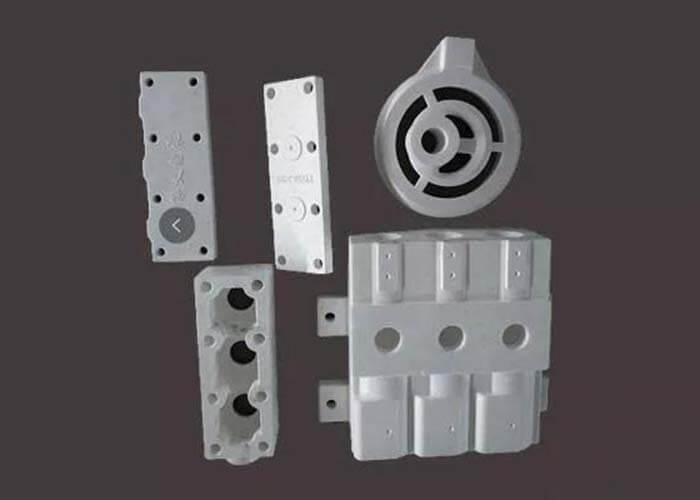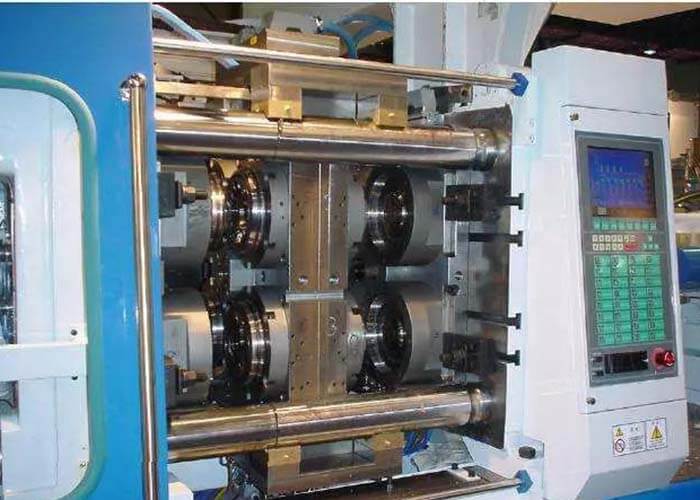In the process of injection molding, carelessness can cause injection molded product defects, how to prevent injection molded product defects?

4 ways to solve injection molded product defects
To solve injection molded product defects, there are many methods. Today, we do from the 4 aspects of the injection molding machine, injection mold, injection molding process, and plastic raw materials to solve the injection molded product defects.
To solve the injection molded product defects from the injection molding machine
From the injection mold to solve the injection molded product defects
From the injection molding process to solve injection molded product defects
From the plastic raw material to solve the injection molding product defects
To solve the injection molded product defects from the injection molding machine

(1) The plasticizing capacity of the injection molding machine is small. If the product quality exceeds the actual maximum injection quality of the injection molding machine, the amount of material supplied will not be enough;
If the product quality is close to the actual injection quality of the injection molding machine, the plasticizing is not sufficient and the material is not heated enough in the barrel of the machine to provide the proper molten material to the mold in time. It is necessary to replace the injection molding machine with a large capacity.
(2) The temperature displayed by the thermometer is not true, high and low, resulting in low material temperature due to the failure of temperature control devices (such as thermocouples and their lines or temperature difference millivolt meters), or the aging or burning of the electric heating ring away from the temperature measurement point, resulting in the failure of heating. Need to repair and replace in time.
(3) The diameter of the inner hole of the nozzle is too large or too small. If the diameter of the nozzle is too small, the specific volume of the material increases, and it is easy to cause cold, blocking the feed channel or consuming the injection pressure;
If it is too large, the cross-sectional area of the circulation is large and the pressure per unit area of the plastic into the injection mold is low, forming a small injection force.
Such as ABS because of the lack of access to large shear heat, cannot make the viscosity drop, thus causing difficulties in filling the injection mold. Nozzle and the main flow channel inlet with poor, often occur outside the mold overflow material, the mold is not filled with the phenomenon.
The nozzle itself’s flow resistance is very large or there are foreign objects, plastic charred deposits, and other blockages.
Nozzle or mainstream inlet spherical damage, deformation, affecting the good cooperation with each other; Note seat mechanical failure or deviation, so that the nozzle and the mainstream axis of the tilting displacement, or axial compression surface from; nozzle ball diameter than the mainstream inlet ball diameter, due to the edge of the gap, in the overflow squeeze gradually increase the nozzle axial push open force will cause the product injection is not enough.
(4) plastic lumps blocking the feeding channel due to plastic in the hopper dryer local melting lumps, barrel feeding section temperature is too high, plastic grade selection is not appropriate, plastic contains too much lubricant, will make the plastic in the inlet shrinkage position, or screw start screw end of the deep groove prematurely melted.
The result is that the granules and molten material stick to each other, blocking the channel or encasing the screw, which rotates with the screw as a circular slide and cannot move forward, causing interruptions or irregular fluctuations in the supply of material. This situation can only be fundamentally solved after cutting through the channel and excluding the material block.
(5) Nozzle cold material into the injection molding machine is usually due to taking into account the pressure loss and only installed through the nozzle.
However, if the front end of the barrel and nozzle temperature is too high, or in the high-pressure state of the barrel front storage too much material, resulting in salivation, so that the plastic in the case of open injection and mold, accidentally preempted into the main channel entrance, and in the cooling effect of the template hardened, thus preventing the smooth entry of molten material into the cavity.
In this case, the temperature of the front end of the barrel and the nozzle should be reduced, as well as the storage capacity of the barrel, and the backpressure should be reduced to avoid excessive melt density at the front end of the barrel.
(6) The cycle is too short because of the short cycle, the material temperature cannot keep up with the shortage of material, especially when the voltage fluctuation is obvious. The cycle should be adjusted accordingly according to the supply voltage.
The main consideration is to adjust the time from the completion of pressure-holding to the return of the screw, which does not affect the molding conditions and can extend or shorten the preheating time of the material in the barrel.
From the injection mold to solve the injection molded product defects
(1) The injection mold pouring system is defective and the runners are too small, too thin, or too long, increasing the fluid resistance.
The main runner should be increased in diameter, and the runner and manifold should be caused to be rounded better. The runners or gates are too large and the injection force is not sufficient; the runners and gates are blocked by impurities, foreign bodies, or carbide;
The roughness of runners and gates with scars or sharp corners, poor surface roughness, poor material flow; runners without cold wells or with small cold wells, opened in the wrong direction;
For multi-cavity molds, the runner should be carefully arranged and the size of the sprue should be balanced, otherwise, only the cavities near the main flow path or the thick and short sprue can be filled, while the other cavities cannot be filled.
It should be appropriate to thicken the diameter of the runner, so that the flow of molten material to the end of the runner pressure drop is reduced, but also to increase the gate far from the mainstream cavity so that the injection pressure and material flow speed of each cavity is basically the same.
(2) The mold design is unreasonably complex, with many twists and turns, inappropriate choice of the inlet, too narrow runners, insufficient number of gates, or inappropriate forms; the product is thin in part, the thickness of the whole product or part should be increased, or set up auxiliary runners or gates in the vicinity of the underfill;
Inadequate venting of the mold cavity is a common occurrence, causing dissatisfaction of the part. This defect is mostly found in bends, deep depressions, thin-walled sections surrounded by thick-walled sections, and the bottom of thin bottom shells formed with side gates.
The design to eliminate this defect includes the creation of effective air venting channels, the selection of reasonable gate locations to allow air to escape in advance, and, if necessary, deliberately making an insert in one part of the trapped area of the cavity so that air escapes through the insert gap;
For multi-cavity molds that are prone to unbalanced gate distribution, the number of injection cavities should be reduced if necessary to ensure that other cavities are qualified.
From the injection molding process to solve injection molded product defects
(1) Improper adjustment of the feed, lack of material or multiple materials or inaccurate metering or irregular operation of the feed control system, injection machine or injection mold or operating conditions leading to injection cycle anomalies, pre-molding backpressure is small or the density of material particles in the barrel is small may cause lack of material.
For large grains, more gaps and crystalline plastics such as polyethylene, polypropylene, nylon, and other plastics with high viscosity such as ABS, a higher volume of material should be adjusted, and a larger volume of material should be adjusted when the material temperature is high.
When the end of the barrel stock is too much material, the injection screw consumes more injection pressure to tighten, push the barrel of the excess stock, which greatly reduces the effective injection pressure of plastic into the cavity, and makes it difficult to fill the product.
(2) The injection pressure is too low, the injection time is short, the plunger or screw returns too early molten plastic at a low working temperature with high viscosity and poor fluidity, should be injected at a higher pressure and speed.
For example, when making ABS-colored parts, the colorant’s intolerance of high temperature limits the heating temperature of the barrel, which should be compensated by a higher injection pressure and longer injection time than usual.
(3) Slow injection speed for some complex shapes, thickness changes, long process products, and viscosity of plastics such as toughness ABS has a very prominent significance. When the use of high pressure cannot be filled with products, should consider the use of high-speed injection in order to overcome the problem of insufficient injection.
(4) the material temperature is too low barrel front temperature is low, into the cavity of the molten material due to the cooling effect of the mold and the viscosity of the premature rise to the point where it is difficult to flow, hindering the distal end of the filling mold;
Low temperatures at the rear of the barrel make it difficult for viscous plastics to flow and prevent the screw from moving forward, resulting in the pressure gauge appearing to indicate sufficient pressure when in fact the melt is entering the cavity at low pressure and low speed.
Low nozzle temperatures can be caused by the nozzle being in contact with the cold mold for a long time during fixed charging and losing heat, or by the nozzle heating ring not providing enough heat or making poor contact, which can block the mold’s infeed channel;
If the injection mold does not have a cold well, use a self-locking nozzle, use the post-filling procedure, the nozzle can maintain the necessary temperature; when the machine is just turned on the nozzle is too cold sometimes you can use a flame gun to do external heating to accelerate the nozzle warming.
From the plastic raw material to solve the injection molding product defects
This is mainly due to the poor flow of plastic. Many plastics factories often use recycled scrap, which often reflects a tendency to increase viscosity. To improve the flowability of plastics, the addition of external lubricants such as stearic acid or its salts should be considered, preferably with silicone oil (viscosity 300-600cm2/s). The addition of a lubricant improves both the fluidity and stability of the plastic and reduces the gas resistance of the gaseous material.
Besides the 4 Aspects To Solve Injection Molded Product Defects article, you may also be interested in the below articles.
Summary Of 50 Injection Mold Structure Operation Dynamic Diagrams
Auto Parts Stamping Die Design Concept
